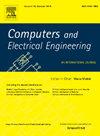HWDQT: A hybrid quantum machine learning method for ultra-short-term distributed photovoltaic power prediction
IF 4
3区 计算机科学
Q1 COMPUTER SCIENCE, HARDWARE & ARCHITECTURE
引用次数: 0
Abstract
This paper proposes a novel framework for ultra-short-term distributed photovoltaic (PV) power prediction, aiming to improve prediction accuracy and reliability, ensuring the safe, stable, and economically efficient operation of active distribution networks. This framework uniquely integrates data augmentation, clustering, and quantum machine learning (QML). Firstly, considering the problem of insufficient data under extreme weather fluctuation patterns, the Wasserstein Generative Adversarial Network with Gradient Penalty (WGAN-GP) incorporating bidirectional Long Short-Term Memory (BiLSTM) layers is adopted for data expansion. Introducing BiLSTM network layers enhances its ability to capture long-term sequence dependencies. Secondly, a two-stage clustering method is specifically designed to classify weather fluctuation patterns accurately. On this basis, a hybrid quantum–classical prediction model is constructed by combining Variational Quantum Circuits (VQC) with Long Short-Term Memory (LSTM) networks to compensate for the shortcomings of traditional methods in feature mining. In addition, this article introduces a new evaluation metric: the Improved Weighted Mean Absolute Percentage Error (WMAPE-), which is used to measure model performance more comprehensively. The comparative experiments indicate that the proposed model outperforms BiLSTM, LSTM, DLinear, Gated Recurrent Unit (GRU), Convolutional Neural Network-Gated Recurrent Unit (CNN-GRU), and Temporal Convolutional Network (TCN) models in terms of prediction accuracy, convergence speed, stability, and generalization capability. Under different weather fluctuation patterns, the average values of the proposed model are 0.998, 0.993, and 0.984, respectively. This study provides a new reference direction for accurate prediction of distributed PV power, which is of great significance for optimizing grid integration and energy management in renewable energy systems.
求助全文
约1分钟内获得全文
求助全文
来源期刊

Computers & Electrical Engineering
工程技术-工程:电子与电气
CiteScore
9.20
自引率
7.00%
发文量
661
审稿时长
47 days
期刊介绍:
The impact of computers has nowhere been more revolutionary than in electrical engineering. The design, analysis, and operation of electrical and electronic systems are now dominated by computers, a transformation that has been motivated by the natural ease of interface between computers and electrical systems, and the promise of spectacular improvements in speed and efficiency.
Published since 1973, Computers & Electrical Engineering provides rapid publication of topical research into the integration of computer technology and computational techniques with electrical and electronic systems. The journal publishes papers featuring novel implementations of computers and computational techniques in areas like signal and image processing, high-performance computing, parallel processing, and communications. Special attention will be paid to papers describing innovative architectures, algorithms, and software tools.
 求助内容:
求助内容: 应助结果提醒方式:
应助结果提醒方式:


